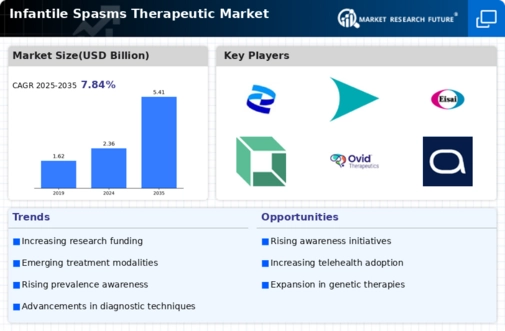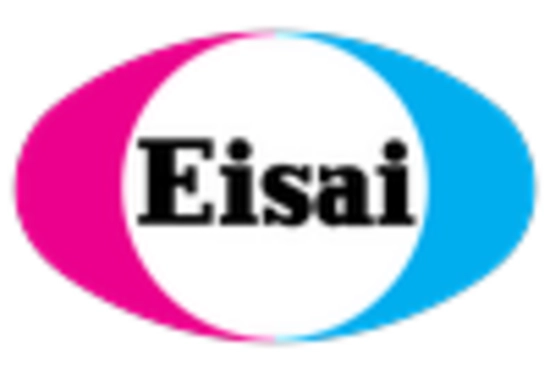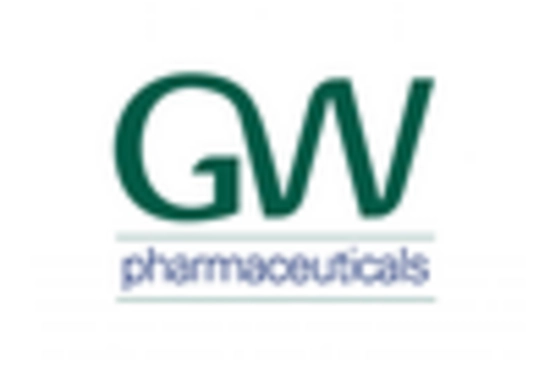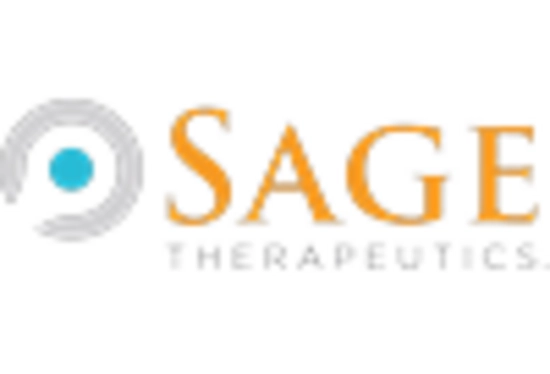Innovative Therapeutic Approaches
The emergence of innovative therapeutic approaches is significantly influencing the Infantile Spasms Therapeutic Market. Recent advancements in drug formulations and delivery systems have led to the development of novel therapies that offer improved efficacy and safety profiles. For instance, the introduction of cannabidiol-based treatments has shown promise in clinical trials, potentially transforming the therapeutic landscape for infantile spasms. Additionally, the exploration of combination therapies that integrate traditional antiepileptic drugs with newer agents may enhance treatment outcomes. As these innovative therapies gain regulatory approval and enter the market, they are expected to attract considerable attention from healthcare providers and patients alike, thereby driving market growth.
Regulatory Support for New Therapies
Regulatory support for new therapies is emerging as a significant driver for the Infantile Spasms Therapeutic Market. Regulatory agencies are increasingly adopting expedited review processes for innovative treatments aimed at rare pediatric conditions, including infantile spasms. This supportive regulatory environment encourages pharmaceutical companies to invest in the development of new therapies, as the pathway to market approval becomes more streamlined. Additionally, the potential for orphan drug designation offers financial incentives, further motivating companies to focus on this niche market. As a result, the influx of new therapies is likely to enhance treatment options available to patients, ultimately contributing to the growth of the market.
Rising Incidence of Infantile Spasms
The increasing incidence of infantile spasms is a notable driver for the Infantile Spasms Therapeutic Market. Recent studies indicate that the prevalence of this condition is approximately 2 to 5 per 10,000 live births, suggesting a growing patient population requiring effective therapeutic interventions. As awareness of this condition rises among healthcare professionals and parents, the demand for targeted treatments is likely to escalate. This trend is further supported by the development of new diagnostic tools that facilitate earlier detection, thereby increasing the number of diagnosed cases. Consequently, pharmaceutical companies are motivated to invest in research and development, leading to a more robust pipeline of therapies aimed at addressing the needs of this vulnerable population.
Increased Investment in Pediatric Neurology
The growing investment in pediatric neurology is a critical driver for the Infantile Spasms Therapeutic Market. Governments and private organizations are increasingly recognizing the need for specialized care in pediatric neurology, leading to enhanced funding for research initiatives and clinical trials. This influx of capital is likely to accelerate the development of new therapeutic options for infantile spasms, addressing the unmet needs of affected children. Furthermore, the establishment of dedicated pediatric neurology centers is expected to improve access to care, facilitating timely diagnosis and treatment. As a result, the market is poised for expansion, with a focus on developing therapies that cater specifically to the unique needs of this patient demographic.
Growing Awareness Among Healthcare Professionals
The growing awareness among healthcare professionals regarding infantile spasms is a pivotal driver for the Infantile Spasms Therapeutic Market. Educational initiatives and training programs aimed at neurologists and pediatricians are enhancing the understanding of this condition, leading to earlier diagnosis and intervention. As healthcare providers become more informed about the latest treatment options and guidelines, the likelihood of appropriate referrals and treatment recommendations increases. This heightened awareness is expected to translate into a greater demand for therapeutic solutions, as clinicians seek to provide optimal care for their patients. Consequently, pharmaceutical companies may respond by expanding their marketing efforts and educational outreach to healthcare professionals, further stimulating market growth.

















Leave a Comment